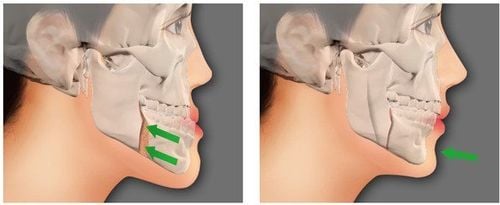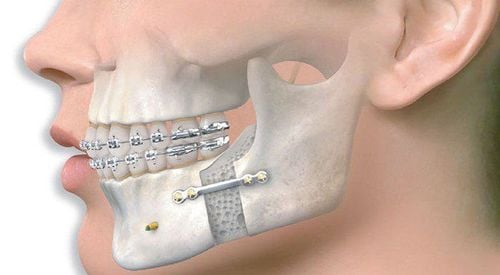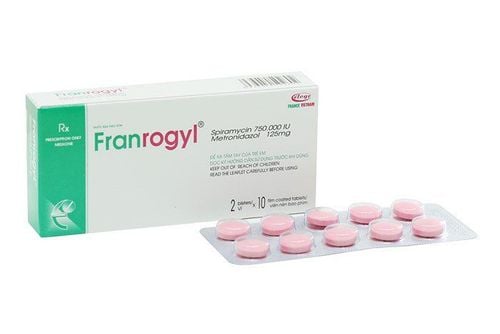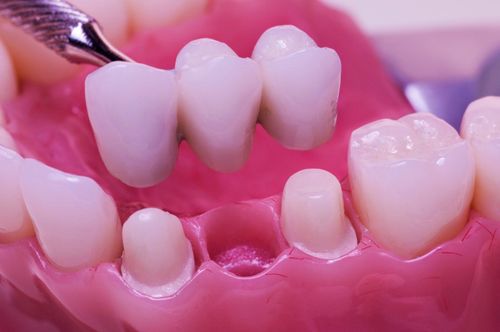This is an automatically translated article.
A root canal is a dental procedure used to repair a tooth with a damaged pulp without having to remove it. However, there are many people who do not want to take root canals, but choose other alternative methods to treat pulpitis.1. What is root canal?
When a tooth is severely damaged or decayed, the soft tissue inside the tooth (pulp) can become inflamed or infected. This can happen when:A very deep hole caused by a decayed tooth. Cracked, broken or traumatized teeth. Inflammation of the tooth pulp. Multiple dental procedures performed on one tooth. During a root canal procedure, the pulp is removed from the tooth. The inside of the tooth, including the root canal, will be cleaned and disinfected to remove bacteria thoroughly. After the pulp is removed, the tooth will be filled and a crown is placed on top to help restore the tooth and prevent further damage.
Root canal treatment has been known by many people as a annoying tricks. However, they are usually no more painful than other types of dental procedures. In some cases, patients can choose alternatives to root canals.
2. Alternatives to root canal treatment
2.1. Direct root canal capping Direct pulp encapsulation is a type of dental procedure that can be used to treat severe lesions or cavities that expose the pulp. Your dentist may recommend it as a way to prevent future root canals or extractions.In this procedure, a material is placed directly on the crown. The material used for direct capping can be calcium hydroxide or mineral trioxide aggregate (MTA).
The application of these materials is to create a mineral barrier, which protects the exposed pulp and promotes tissue repair. After the pulp material is applied, the tooth will be filled with a filling.
However, there are some difficulties with this method. Direct root canal treatment is usually only recommended when exposure is low and the exposed crown is healthy, with no signs of infection or decay. Also, it is often most effective in young people.

Lấy tủy răng nhằm sửa chữa chiếc răng bị hỏng tủy
Root canal surgery is different from taking root in the canal (pulpectomy). In a root canal surgery, the canal and nerve are preserved and the inflamed pulp is removed. Then, a material is added inside the tooth to promote healing as well as prevent bacterial growth. Some of the materials used include formocresol, calcium hydroxide, and MTA.
Root canals are often performed in children who still have baby teeth or immature adult teeth where the roots are not fully formed. In adults, they are usually only done as an emergency procedure to relieve pain until the pulp can be removed.
If there are signs of infection or irreversible damage to the pulp, you should not have a root canal surgery. In this case, root canal surgery or tooth extraction will be necessary.
2.3. Extraction A tooth extraction may be recommended in cases where the tooth is decayed or severely damaged. Usually, the dentist will determine that the tooth damage cannot be repaired through other techniques, such as pulpectomy.
Some tooth extractions are simple and can be done in a dental clinic. During a simple extraction, forceps are used to clamp the tooth. Then, different movements are used to loosen the tooth in the socket, allowing it to be removed easily.
Other tooth extractions may be more complicated and need to be performed by an oral surgeon. This usually involves incisions and stitches. For teeth that are larger or difficult to remove, they need to be divided into several pieces before extraction.
After a tooth is extracted, a number of things can be used to replace it. Some examples include:
Implant: An implant is a fixture that is placed directly into your jawbone. After the area heals, an artificial tooth is attached to the implant. Bridges: There are several different types of bridges, they consist of an artificial tooth attached to a crown designed to fit adjacent teeth. Partial Removable Dentures: Partial removable dentures consist of an artificial tooth with a base that matches the color of your gums. It can be secured by fixing the connection with neighboring teeth.
3. Why should you consider a root canal if your dentist recommends it?
It's normal to feel nervous or insecure if your dentist recommends a root canal, but it's important that you consider the suggestion. You can also ask about alternative procedures such as pulp capping or root canal surgery.If your dentist recommends a root canal, this may be the most effective treatment option for your current condition.
One of the main concerns many people have about root canals is that they will be painful. However, the level of discomfort during a root canal can be similar to the sensation of a filling.

Nhiều người không muốn lấy tủy răng vì sợ đau
4. You can prevent root canals
The best way to prevent pulpitis to avoid root canals is to practice good oral hygiene. Specifically:Proper brushing: Brushing helps remove plaque on the tooth surface. Since plaque buildup can lead to tooth decay, try to brush your teeth at least twice a day with a toothpaste that contains fluoride. Floss: Plaque can also build up in hard-to-reach places, which can include spaces between your teeth. Try to clean between your teeth regularly with dental floss. Cut down on certain foods: Foods or drinks that are high in sugar can contribute to tooth decay, so try to limit your intake of sweets, cakes, and soft drinks. Drink from the tap: If you're thirsty, choose tap water instead of bottled water. Most tap water contains fluoride, which can help keep your teeth healthy. Protect your mouth: If you participate in an activity or sport where your tooth could be injured, wear a mouth guard. Visit the dentist: See your dentist for regular checkups and cleanings. Also, don't hesitate to contact them if you are experiencing symptoms such as toothache, sensitivity or swelling. Root canal treatment is a procedure used to repair a tooth without the need for extraction. This is usually done when the pulp is inflamed or infected due to causes such as tooth decay.
There are other procedures that can be done as an alternative to a root canal. These include pulp capping, pulpectomy, and tooth extraction. Whether these treatments are appropriate or not depends on your specific situation.
Please dial HOTLINE for more information or register for an appointment HERE. Download MyVinmec app to make appointments faster and to manage your bookings easily.
Reference source: healthline.com












